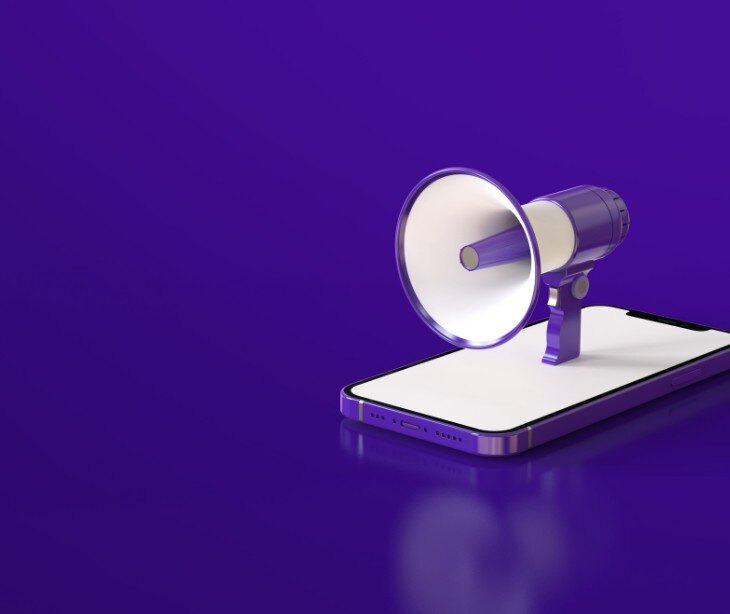3 min read
Using text messages to notify patients of a data breach
Tshedimoso Makhene
October 15, 2024

Text messaging is a fast, efficient, and effective method for notifying patients of a data breach. It allows healthcare organizations to alert patients promptly, providing them with the information they need to protect themselves. However, it’s crucial to ensure notifications are clear, compliant with regulations like HIPAA, and accompanied by support resources.
Why use text messages for data breach notifications?
Text messaging is an ideal method for data breach notifications for several reasons:
- Speed: Text messages are delivered almost instantly, allowing healthcare providers to alert patients quickly. In cases where personal and financial information may have been compromised, time is of the essence. A swift notification gives patients time to take protective measures, such as monitoring their accounts and contacting their banks.
- Accessibility: Mobile phones are ubiquitous, and most people check their phones daily. Unlike emails or letters, text messages are read almost immediately. Research shows that 90% of text messages are opened within three minutes of delivery, making them a highly effective communication tool for urgent situations.
- Simplicity: Unlike emails or mailed letters that may contain lengthy explanations, text messages are designed to be concise and to the point. In a data breach scenario, patients need clear, actionable information without unnecessary jargon. A short, direct message ensures that the key details aren’t lost in an overwhelming amount of text.
Steps to notifying patients of a data breach via text message
When notifying patients of a data breach through text message, healthcare organizations must consider clarity and compliance with privacy laws such as the Health Insurance Portability and Accountability Act (HIPAA). Below are the steps to ensure the process is effective and legally sound:
Determine the severity and scope of the breach
Before drafting any message, the healthcare provider needs to assess the severity of the data breach. What kind of information was compromised? Was it health-related data, financial details, or personally identifiable information (PII) such as Social Security numbers or addresses? Knowing the extent of the breach will allow the organization to provide appropriate guidance in the notification message.
See also: What is the difference between PII and PHI?
Craft a clear and compliant message
The text message must strike a balance between brevity and providing sufficient information. Patients need to know that their data has been exposed, what information is involved, and what steps they can take to protect themselves. While text messages are limited in character count, they should also include a link to a webpage or hotline where patients can learn more.
Offer support and resources
After a data breach, patients often need reassurance and guidance. The text message should direct them to resources where they can learn more about the breach, its impact on their data, and steps they can take to protect themselves. For example, a dedicated webpage could provide instructions for changing passwords, enrolling in credit monitoring services, or understanding potential risks.
Additionally, it’s important to offer a hotline or a customer service line where patients can ask questions or seek clarification.
Ensure compliance with HIPAA
HIPAA requires that healthcare providers notify patients promptly after a data breach involving protected health information (PHI). According to the HIPAA Breach Notification Rule, notifications must be sent “without unreasonable delay and in no case later than 60 days following the discovery of a breach.” Text message notifications must still comply with HIPAA, meaning no sensitive health information is disclosed in the message itself.
Additionally, if more than 500 individuals are affected, the breach must be reported to the Department of Health and Human Services (HHS) and local media. Text messaging can be part of a broader communication plan that includes mailed letters and press releases, ensuring that all affected individuals are reached.
Related: What are the HIPAA breach notification requirements
Evaluate and improve
After the notifications have been sent, it’s important to assess the effectiveness of the communication. Did patients receive and understand the text message? Were they able to access the additional resources? Healthcare organizations can gather feedback from patients and adjust their notification procedures for any future incidents.
Example
Here’s a sample text message for a data breach notification:
URGENT: Data Breach Notification
Dear [Patient Name],
We regret to inform you that [Healthcare Provider] recently experienced a data breach. Your personal information, including [specific types of data], may have been affected. Please monitor your accounts for suspicious activity. For more info, visit [website link] or call [contact number].
We apologize for any inconvenience and are committed to safeguarding your privacy.
This message serves to inform the patient without causing panic, and it provides clear instructions on where to find more details.
See also: The guide to HIPAA compliant text messaging
FAQs
What if I didn't receive a text message but suspect my data was breached?
If you haven’t received a notification but believe your information may have been compromised, contact the healthcare provider directly. They should be able to confirm whether your data was affected and guide you on the next steps to take.
What can I do to protect my personal information after a data breach?
After a data breach, you should:
- Change your passwords and use unique, complex passwords for all your accounts.
- Enable two-factor authentication (2FA) on your online accounts.
- Monitor your bank, credit card, and medical accounts for any unusual activity.
- Consider freezing your credit report to prevent unauthorized credit inquiries.
- Stay vigilant for phishing attempts, which often increase after data breaches.
How do I know if a data breach notification text is legitimate?
To verify if a data breach notification is legitimate:
- Check the sender's contact information and ensure it matches the healthcare provider’s official contact details.
- Look for specific details about the breach and instructions directing you to official company resources (e.g., a website or customer service number).
- Avoid clicking on any suspicious or unfamiliar links. Instead, visit the provider’s website directly or call them using a known phone number to confirm the authenticity of the notification.
Subscribe to Paubox Weekly
Every Friday we'll bring you the most important news from Paubox. Our aim is to make you smarter, faster.




